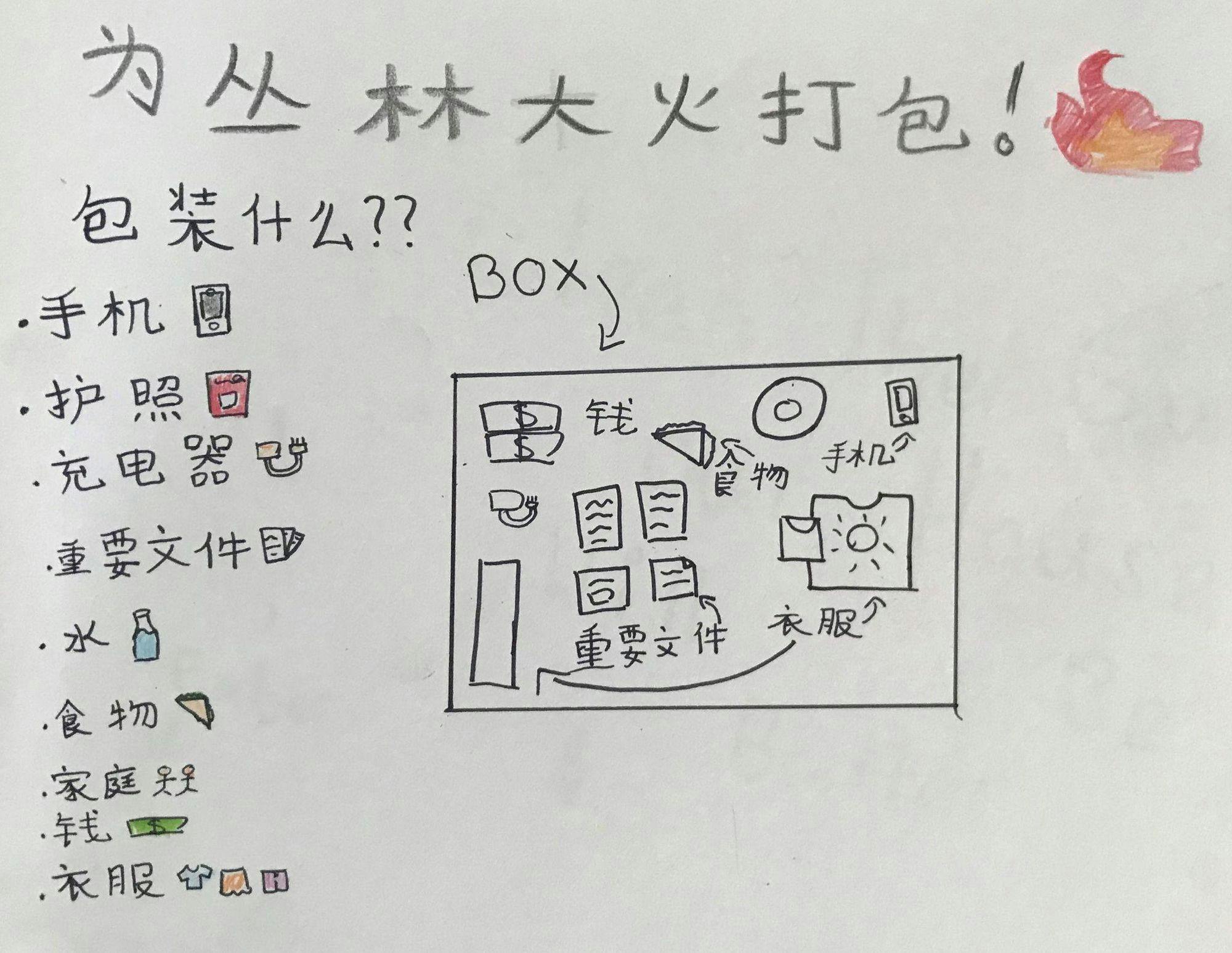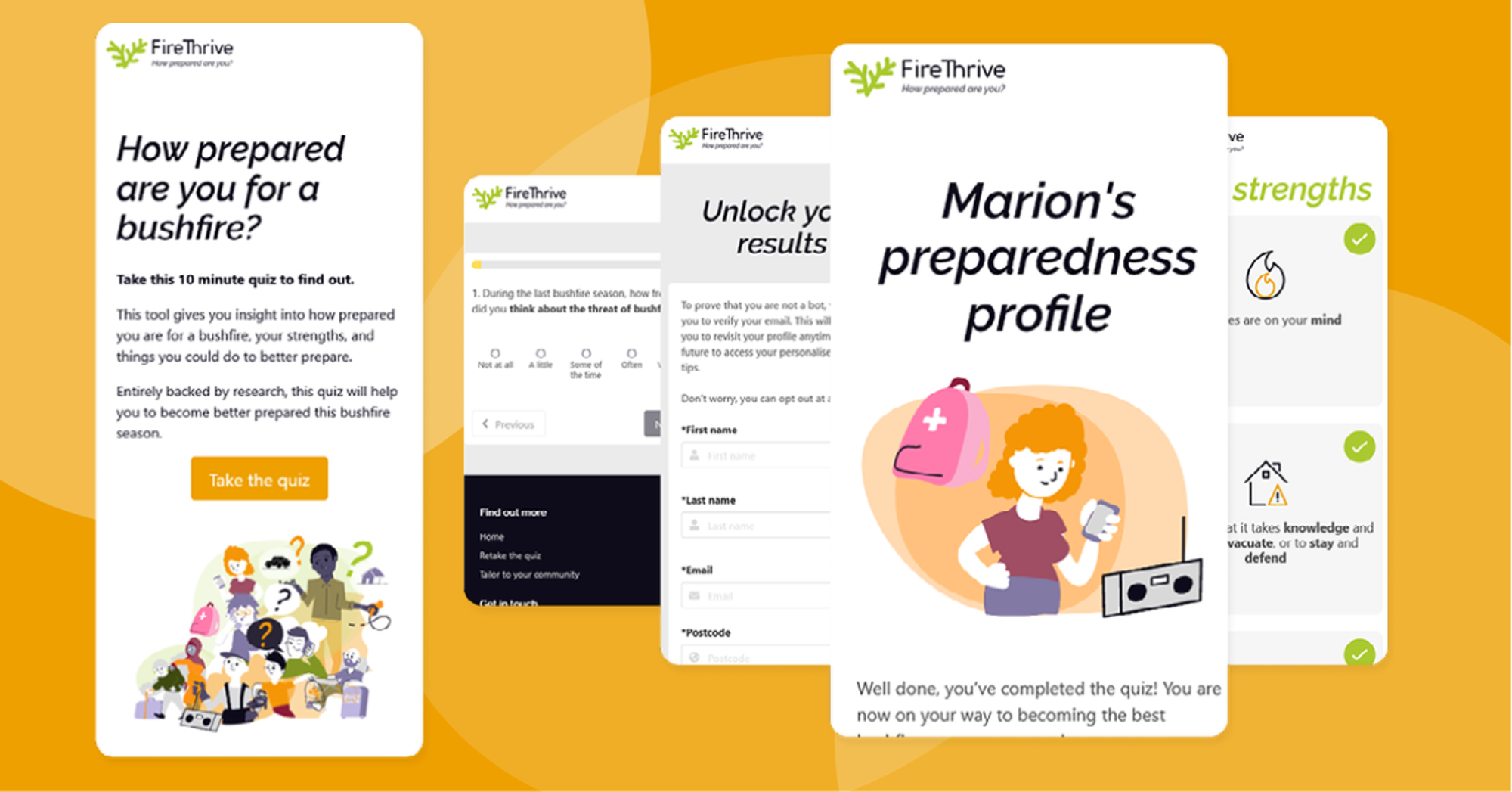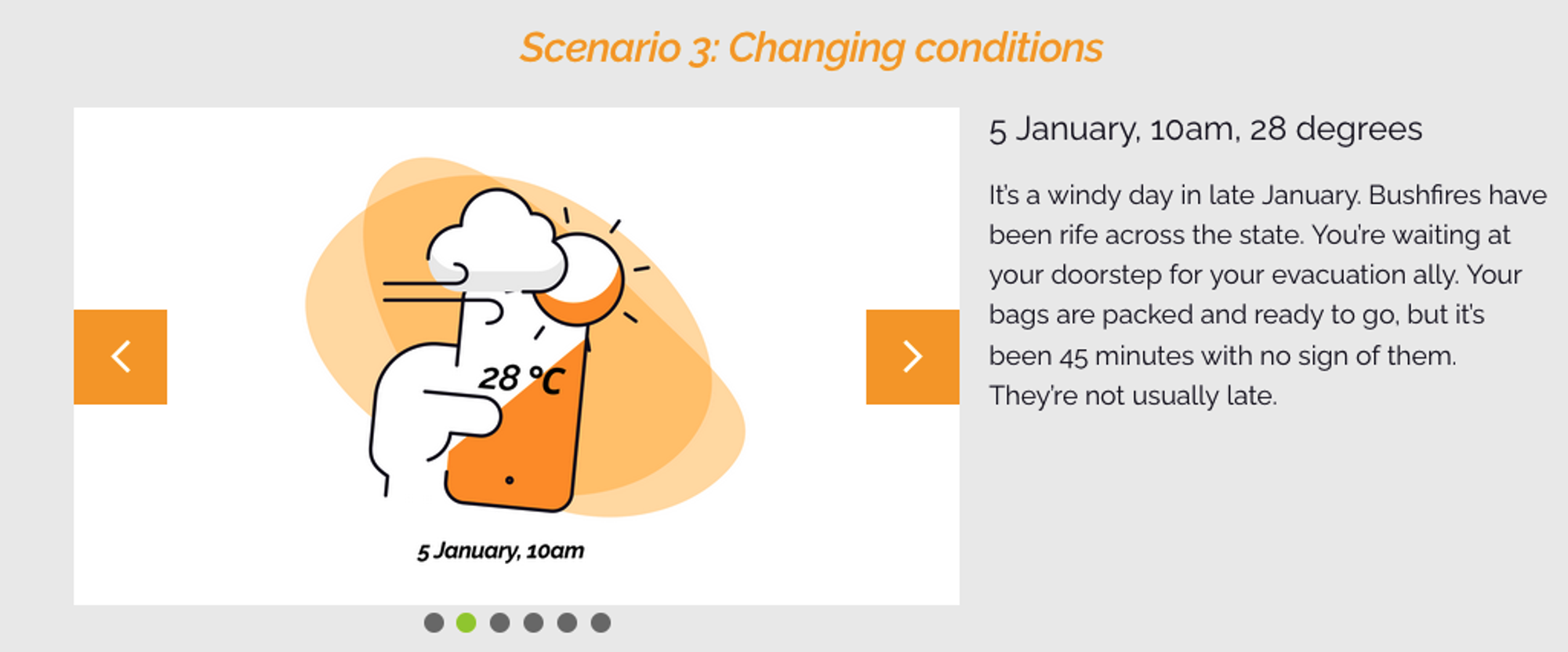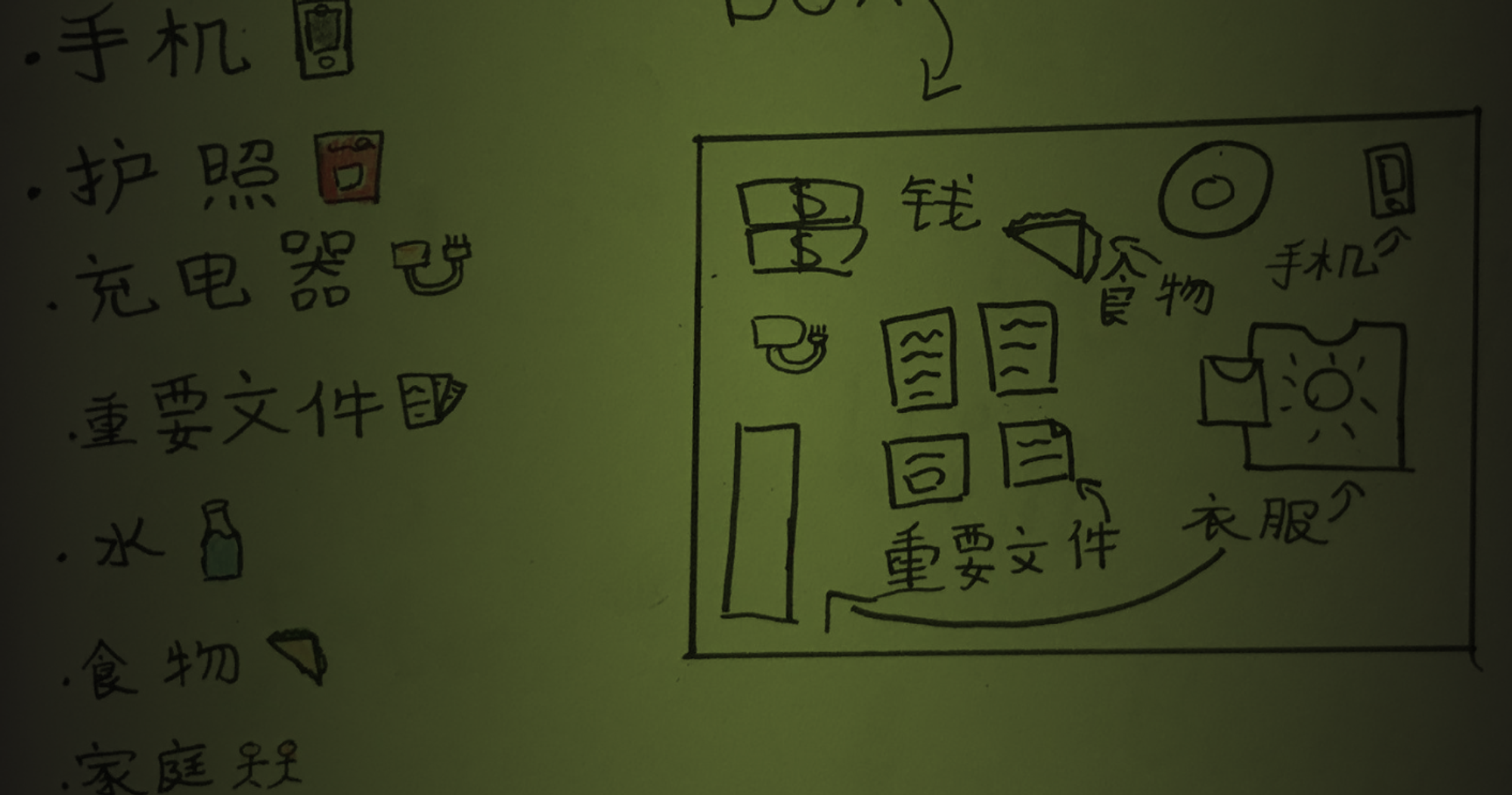 Rachael Vorwerk
Rachael VorwerkChallenge statement
How might we create an engaging learning resource for Year 8 students to become better bushfire-prepared.
What the client wanted
St Helena Secondary College were looking for a hands on lesson plan to help students to plan a bushfire preparedness pack.
Research tells us that children are uniquely positioned to shape behaviour in the household. The intent for this project was for children to design a bushfire preparedness pack to be
taken home and adopted by their parents.

Impact
The FireThrive team created an education resource suited to the Year 8 Victorian State curriculum in partnership with SOSE teacher Mathew Steen.
The students undertook a paper-based version of Dr Ken Strahan’s bushfire archetype quiz.
Then, based on their ‘bushfire personality type’, the students designed bushfire preparedness posters for their household. See the example on the right for a poster designed in Mandarin.
Testimonial
“The lesson plan fit really neatly into our existing preparedness course resources, and a lot of students took home their posters and had conversations with their parents about their bushfire ready pack.”
- Mathew Steen, Leading Teacher at St Helena Secondary College (Eltham North, Vic)
Contact us today
If you are looking for tailor-made lesson plans for your students, please get in touch at hello@firethrive.com.
We can work with you to make an interactive and engaging resource to help your students to better adapt to a climate-changed world.
The nitty gritty details
Step 1: Gathering the data
- The team spoke with teacher Mathew Steen about his experiences teaching bushfire preparedness to Year 8 children and ideas for improvement.
- The team then reached out to Dr Briony Towers, a social science researcher who has developed child led bushfire education. She offered her advice and opinions about which resources to draw from.
- The team worked closely with social science researcher Dr Ken Strahan to translate his research into a usable tool for bushfire-prone residents called How prepared are you for a bushfire? (learn more about that project here).
- Through workshops, we worked through Ken’s seven bushfire evacuee ‘personality types’ and identified each archetypes’ most immediate point of improvement
- The Victorian Curriculum and Assessment Authority (VCAA) standards for bushfires and pre existing lesson plans were reviewed for Years 7 and 8
- Existing bushfire lesson plans (some which were from the Country Fire Authority) were reviewed and evaluated for points of improvement
- New learning outcomes were created that aligned to VCAA standards.
Step 2: Developing educational resources
- For each of the seven archetypes’ unique points of improvement we created a guide for each student to get to know their household bushfire behaviours.
- We were mindful in our written tone not to blame or shame, and deliberately did not use the identifying archetype names (e.g Threat Denier), instead opting for ‘Household A’ through to G.
Step 3: Building the resources
- Our Behavioural Designer Danielle Teychenne, and User experience specialist Dan Steen, created poster templates in the online collaborative design program Figma, before further reviewing and editing the content.
Step 4: Embedding the learning resource into the curriculum
- The team handed over the resources to Mathew Steen to present to students.
- The students took their paper-based quizzes home for their parents to fill out before bringing the results back to class so they could create their posters.
- Posters were displayed in a visible location (the fridge) in each of their respective homes to shape household bushfire behaviour.
Active Sustainability Development Goals (SDGs):
Goal 4: Quality Education
Goal 11: Sustainable Cities and Communities
Related projects
.jpg%3Ftable%3Dblock%26id%3D65475f58-becf-47f9-81c7-7d0e7bf45ed5%26cache%3Dv2&w=3840&q=75)
In-language bushfire education animations for CALD communities

A tool to help people understand their strengths and weaknesses in bushfire evacuation

E-learning resources tailored to your unique bushfire preparedness levels

Getting to know Noosa residents’ bushfire knowledge

Personalised email campaigns for seven different bushfire preparedness journeys

Helping our next generation become more bushfire-prepared
